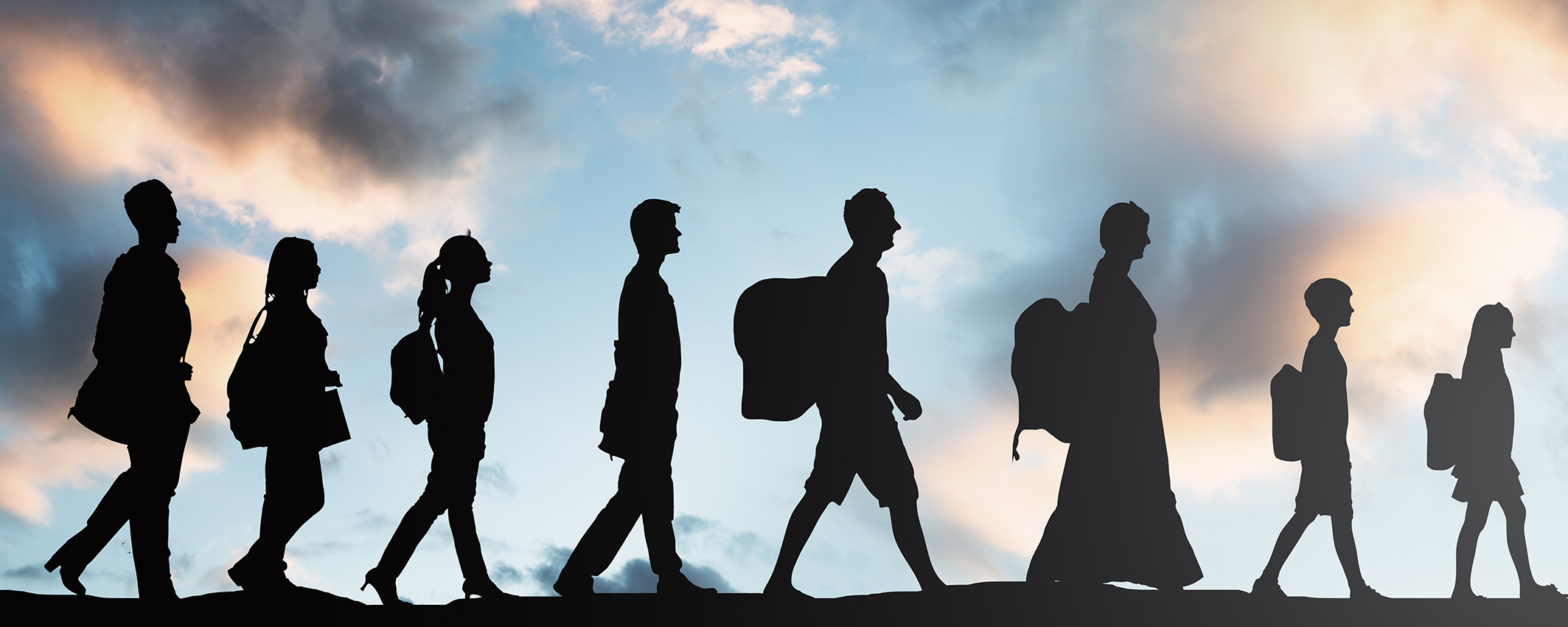 |
CCGL9056 Global IssuesHow We Move: Migration, Border Crossing, and Identity |
Course Description
Modern people are global people – we are people on the move. About 1 out of 5 us who live in Hong Kong came from somewhere else, and many more of us have family who did. Yet these days global people are also falling under suspicion as refugees, immigrants, and dual citizens are targeted as alien, disloyal, and even dangerous. In this course, we ask what it means to have a global identity: to be a migrant, a cosmopolitan, a border-crosser.
We start by thinking about “home”: what makes us think we belong somewhere, and what makes us feel like outsiders? We then look at the ties that bind us beyond borders: What allows us to think of ourselves as part of a diaspora? How do we find love and create families, even when our loved ones are very far away?
We also investigate migration using gender, race, and class. We look at Hong Kong’s domestic workers/“helpers” to think about the intimate spaces inside homes. And we ask how migration helps to define race through law, science, and everyday interactions.
Throughout the course, we will use fun and interesting examples from movies, fiction, photos, and oral histories to understand our global identities, all with the goal of asking: how do we understand the world differently when we “see” as global people? And how does this help us become engaged citizens of the “world city” where we live?

Course Learning Outcomes
On completing the course, students will be able to:
- Reflect on and articulate a critical understanding of global identities by examining issues such as identity, love, safety, hierarchy, and war.
- Analyze the connections and comparisons between our daily experiences and the experiences and concerns of global people through the lenses of class, gender, regional, and colonialism.
- Analyze how refugees, migrants, cosmopolitans, and other globetrotters are embedded in networks; and see how our identities connect with these networks. Gain expertise on how people move around the world, and how our exercises of power affect their movement.
- Demonstrate critical creative thinking and collaboration.
Offer Semester and Day of Teaching
Second semester (Wed)
Study Load
| Activities | Number of hours |
| Lectures | 24 |
| Tutorials | 8 |
| Reading / Self-study | 38 |
| Assessment: Essay / Report writing | 44 |
| Assessment: Presentation (incl preparation) | 6 |
| Total: | 120 |
Assessment: 100% coursework
| Assessment Tasks | Weighting |
| Meeting participation | 25 |
| Mid-term essay | 25 |
| Final project | 50 |
Required Reading / Viewing
- Cheung, J. Yaya. [Documentary film]
- Cheung, M. An autumn’s tale. [Movie]
- Han, S. (2016). Swimming in Hong Kong. [Fictional short story]
- Kapai, P., & the Zubin Foundation. (2018). Executive summary, #HongKonger 253 Ethnic minority youth aspirations, challenges, identity. [NGO Report]
- Law, S. (2012, January). Visible voices of asylum seekers: The art of Vietnamese boatpeople in Hong Kong. International Journal of Humanities and Social Science, 2(1), 81-93.
- Mathews, G., Lin, D., & Yang, Y. (2014). How to evade states and slip past borders: Lessons from traders, overstayers, and asylum seekers in Hong Kong and China. City & Society, 26(2), 217-38.
- Ng, E. (2018). In Pictures: Bridging the gap with ‘invisible’ ethnic minorities in Kowloon City, one tour at a time. Hong Kong Free Press.
- O’Connor, P. (2010, November). Accepting prejudice and valuing freedom: Young Muslims and everyday multiculturalism in Hong Kong. Journal of Intercultural Studies, 31(5), 525-539.
- Selected newspaper articles on current immigration issues.
Recommended Reading
- Bhanji, N. (2011). “TRANS/SCRIPTIONS: Homing desires, (trans)sexual citizenship and racialized bodies.” In T. Cotten (Ed.), Transgender migrations: The bodies, borders, and politics of transition.
- Brown, J. M., & Foot, R. (Eds.). (1994). Migration: The Asian experience.
- Doerfler, J. (2015). Those who belong: Identity, family, blood, and citizenship among the white earth anishinaabeg.
- Gilroy, P. (1993). The Black Atlantic.
- Harzig, C., & Hoerder, D., & Gabaccia, D. (2013). What is migration history?
- Hsu, M. (2000/2018). Dreaming of gold, dreaming of home: Transnationalism and migration between the United States and South China, 1882-1943.
- Hu-DeHart, E. (2007). La Trata Amarilla: The ‘Yellow Trade’ and the middle passage, 1847-1884. In E. Christopher et al (Eds.), Many Middle Passages: Forced Migration and the Making of the Modern World (pp. 166-183).
- Ku, A. (2004, July). Immigration policies, discourses, and the politics of local belonging in Hong Kong (1950-1980). Modern China, 30(3), 326–360.
- Lai, M. Y. (2010). Dancing to different tunes: Performance and activism among migrant domestic workers in Hong Kong. Women’s Studies International Forum, 33(5), 501-511.
- McKeown, A. (1999, May). Conceptualizing Chinese Diasporas, 1842 to 1949. The Journal of Asian Studies, 58(2), 306-337.
- Newendorp, N. (2008). Uneasy reunions: Immigration, citizenship, and family life in Post-1997 Hong Kong.
- Ong, A. (2006). Neoliberalism as exception: Mutations in citizenship and sovereignty.
- Spickard, P. (2009). Immigration, race, ethnicity, colonialism.
Recommended Websites
Course Co-ordinator and Teacher(s)
| Course Co-ordinator | Contact |
| Dr J.T. Petrulis School of Humanities (History), Faculty of Arts |
Tel: 3917 2874 Email: petrulis@hku.hk |
| Teacher(s) | Contact |
| Dr J.T. Petrulis School of Humanities (History), Faculty of Arts |
Tel: 3917 2874 Email: petrulis@hku.hk |

